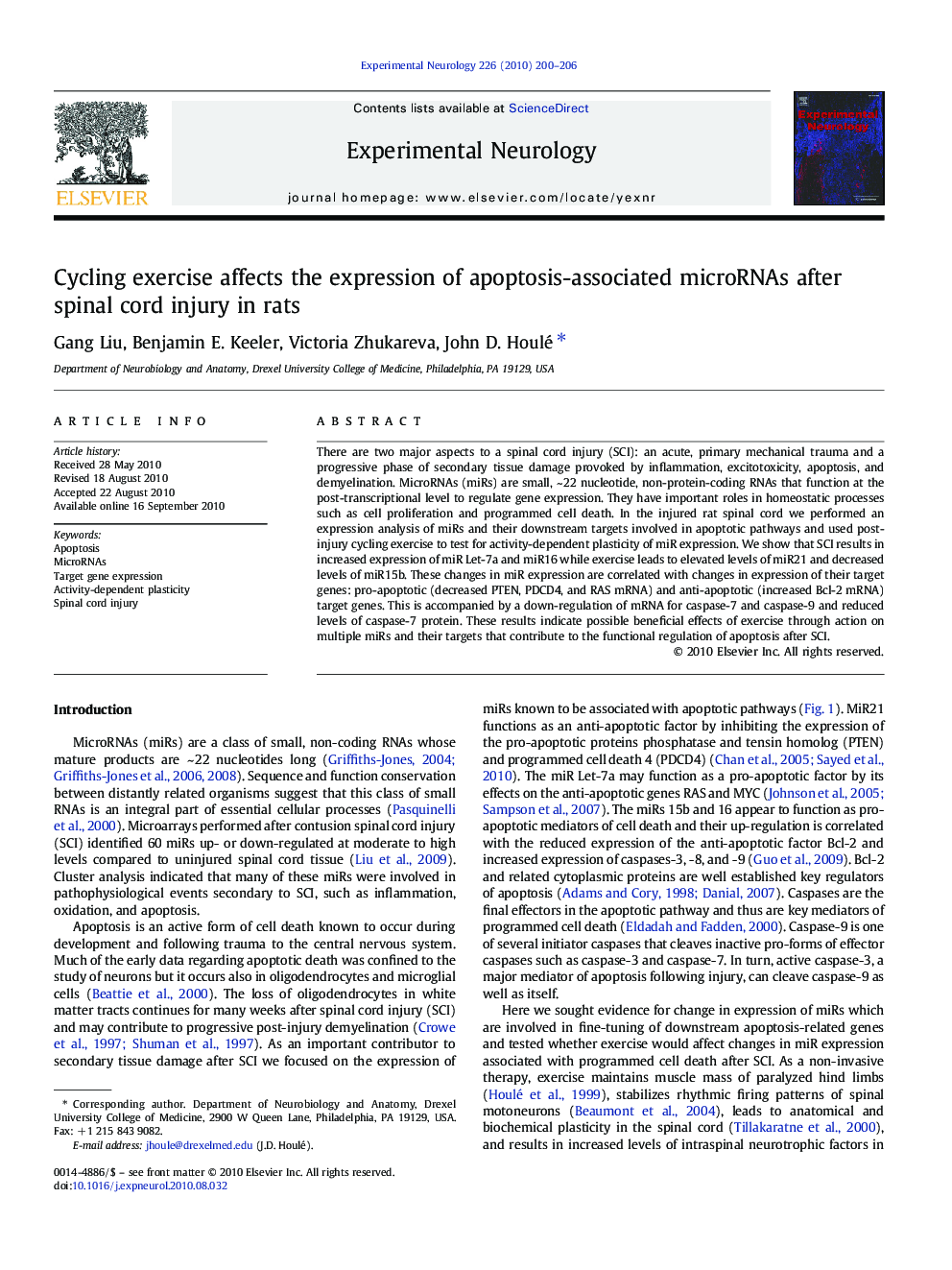| Article ID | Journal | Published Year | Pages | File Type |
|---|---|---|---|---|
| 3055967 | Experimental Neurology | 2010 | 7 Pages |
There are two major aspects to a spinal cord injury (SCI): an acute, primary mechanical trauma and a progressive phase of secondary tissue damage provoked by inflammation, excitotoxicity, apoptosis, and demyelination. MicroRNAs (miRs) are small, ~ 22 nucleotide, non-protein-coding RNAs that function at the post-transcriptional level to regulate gene expression. They have important roles in homeostatic processes such as cell proliferation and programmed cell death. In the injured rat spinal cord we performed an expression analysis of miRs and their downstream targets involved in apoptotic pathways and used post-injury cycling exercise to test for activity-dependent plasticity of miR expression. We show that SCI results in increased expression of miR Let-7a and miR16 while exercise leads to elevated levels of miR21 and decreased levels of miR15b. These changes in miR expression are correlated with changes in expression of their target genes: pro-apoptotic (decreased PTEN, PDCD4, and RAS mRNA) and anti-apoptotic (increased Bcl-2 mRNA) target genes. This is accompanied by a down-regulation of mRNA for caspase-7 and caspase-9 and reduced levels of caspase-7 protein. These results indicate possible beneficial effects of exercise through action on multiple miRs and their targets that contribute to the functional regulation of apoptosis after SCI.
Research Highlights►Exercise affects the expression of apoptosis associated microRNAs after SCI. ►Apoptosis is an active form of cell death during development and trauma in the central nervous system. ►Exercise affects on miR21 decreased expression of its target PTEN and PDCD4 genes. ►The miRs 15b and 16 reduced expression of the anti-apoptotic factor Bcl-2 gene.
